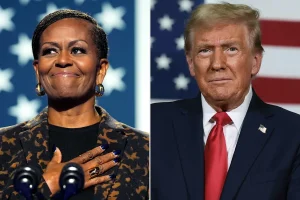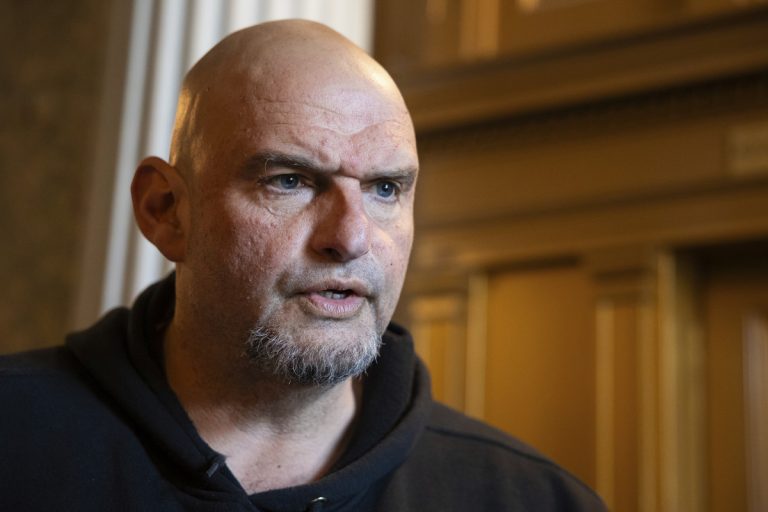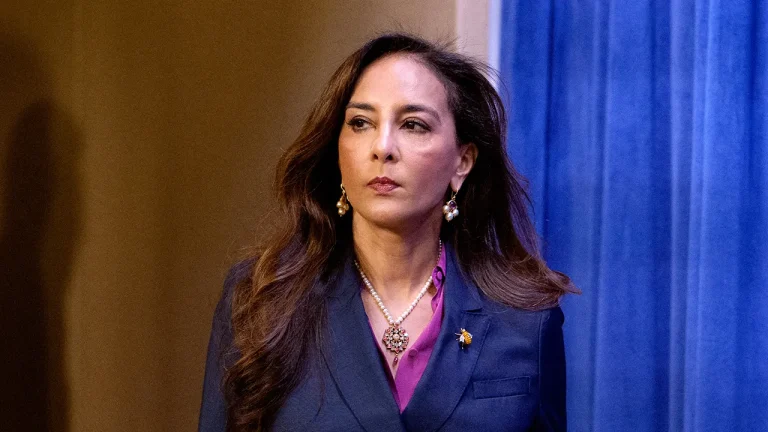Former First Lady Michelle Obama and former President Donald Trump traded public jabs this week after Obama criticized Trump’s proposal to construct a new privately funded ballroom at the White House — a project the former president says would modernize the East Wing and improve the venue’s capacity for state events.
The exchange reignited long-standing tensions between the two political figures, each of whom continues to play an influential role in American public life nearly a decade after leaving the White House.
Michelle Obama’s Remarks
Obama’s comments came during a recent media appearance where she discussed her time as First Lady and criticized what she described as Trump’s “gaudy” approach to presidential projects. According to excerpts circulated on social media, she reportedly expressed concern that the proposed ballroom would “distort the character” of the White House.
The remarks were part of a broader conversation about public spaces, tradition, and what she framed as “respecting the office.”
Critics, however, pointed out that the White House has undergone dozens of renovations over its 225-year history — from the Truman reconstruction in the 1940s to the Clinton-era refurbishment of the State Dining Room.
Trump’s Response
In his usual direct style, Trump responded to Obama’s criticism during a Monday press event, defending the project as “entirely appropriate and privately funded.”
“The East Wing is being spent by private donors,” Trump said. “It’s a $250, $300 million building. It’s going to be the most beautiful anywhere in the world.”
He went on to explain that the project would solve a longstanding logistical issue at the White House — the lack of a proper indoor venue for large state functions.
“They had an event [at the White House] the other day,” Trump added. “With tables, they could hold 79 people. Now, if you have President Xi from China, or if you have some big state event, we have no place to have it. You know what they did? …They put a tent on the lawn. It was a low section because that’s the only section you have… If it rained, you were sitting in six inches of water. It was a disaster.”
Trump’s comments echoed previous statements he made about bringing “world-class design and hospitality” to the White House — using private funds to avoid burdening taxpayers.
Reaction Across the Political Spectrum
The back-and-forth quickly dominated social media, with partisans from both sides weighing in. Supporters of Trump praised the proposal as a cost-free enhancement to the nation’s most iconic residence.
“It’s his money, his donors, and it’s for America’s guests — not himself,” said David Lee, a political consultant and former White House adviser under the Trump administration. “If presidents of both parties have renovated before, why is this suddenly controversial?”
Others, however, saw the plan as emblematic of Trump’s well-known love for opulent design.
“Donald Trump has always viewed the presidency as an extension of his brand,” said Allison Greene, a historian at American University who studies presidential image-making. “The ballroom debate is really about symbolism — how he sees the office and how he wants others to see it.”
The Broader Context: Legacy and Image
The renewed sparring between Trump and Obama reflects the enduring cultural divide between their political camps.
Michelle Obama has spent recent months promoting her memoir and speaking about mental health, media criticism, and life after the White House. Her comments on Trump’s proposal appear to have been part of a broader reflection on leadership, taste, and legacy.
Meanwhile, Trump — who has made several appearances since returning to public life following his 2024 campaign — continues to frame his policies and proposals as efforts to restore what he calls “American elegance and pride.”
Political analysts note that while the ballroom itself may seem like a minor issue, it taps into a deeper narrative: two contrasting visions of what the presidency represents.
“For Trump, grandeur is patriotism,” said Greene. “For Michelle Obama, restraint is respect. They’re not just disagreeing over architecture — they’re disagreeing over what America’s symbols should look like.”
A History of Renovation Controversies
Renovating the White House has often stirred public debate. When Jacqueline Kennedy spearheaded the mansion’s restoration in the early 1960s, critics accused her of being extravagant. Nancy Reagan faced similar pushback in the 1980s for redecorating the private residence using donations from private supporters.
If completed, the new ballroom would be the largest addition to the White House since the completion of the Press Briefing Room in 1970.
White House historians note that the executive mansion currently lacks a formal grand hall comparable to those found in European or Asian state buildings.
Looking Ahead
While the project remains in early planning stages, the former president has insisted that it would not involve taxpayer funding and that it could be completed within three years once approved.
“I think it’ll serve America for generations,” Trump said. “A place where the country can celebrate, host, and showcase the best of who we are.”
The Obama team has not issued further comment following Trump’s remarks.
As debates over image, tradition, and taste continue, the ballroom proposal appears to have become yet another proxy battle in the long-running cultural rivalry between two of the most recognizable political figures of the 21st century.

Emily Johnson is a critically acclaimed essayist and novelist known for her thought-provoking works centered on feminism, women’s rights, and modern relationships. Born and raised in Portland, Oregon, Emily grew up with a deep love of books, often spending her afternoons at her local library. She went on to study literature and gender studies at UCLA, where she became deeply involved in activism and began publishing essays in campus journals. Her debut essay collection, Voices Unbound, struck a chord with readers nationwide for its fearless exploration of gender dynamics, identity, and the challenges faced by women in contemporary society. Emily later transitioned into fiction, writing novels that balance compelling storytelling with social commentary. Her protagonists are often strong, multidimensional women navigating love, ambition, and the struggles of everyday life, making her a favorite among readers who crave authentic, relatable narratives. Critics praise her ability to merge personal intimacy with universal themes. Off the page, Emily is an advocate for women in publishing, leading workshops that encourage young female writers to embrace their voices. She lives in Seattle with her partner and two rescue cats, where she continues to write, teach, and inspire a new generation of storytellers.







